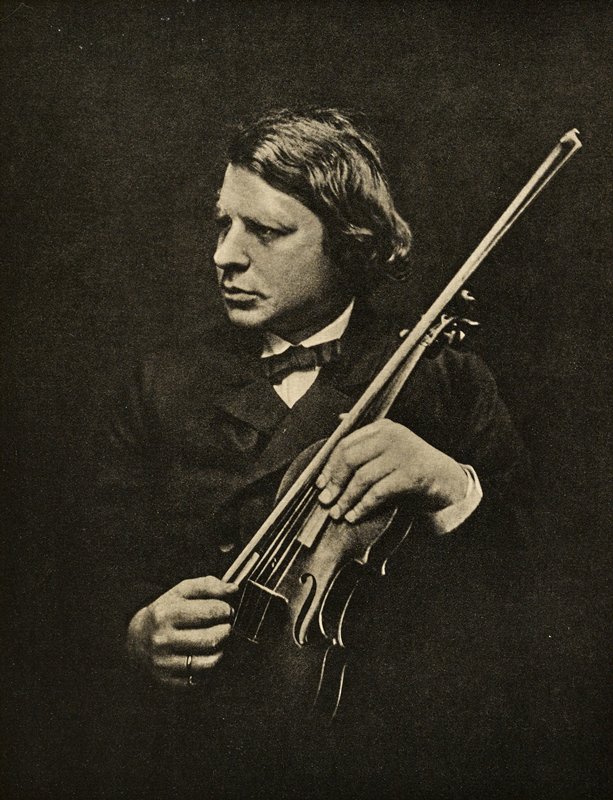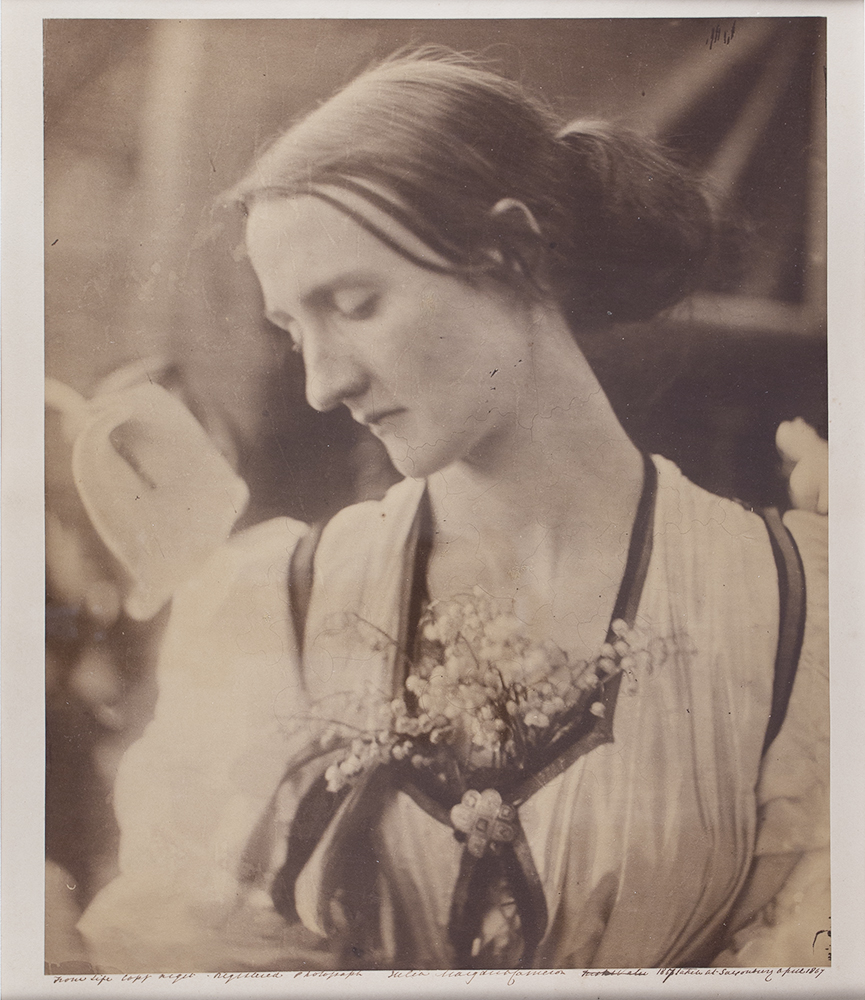About the Photographer
Cameron, Julia Margaret
British, b. 1815 India, d. 1879 Sri Lanka
Whether used in portraits or tableaux vivants illustrating religious and mythological themes, Julia Margaret Cameron's subjects were almost always family members or friends from a social circle of prominent cultural figures that included Alfred Tennyson and Henry Taylor. "Ellen Terry at 16," for example, is a portrait of the famous Shakespearean actress taken in 1864 on the eve of her marriage to the painter and sculptor George Frederic Watts (a union orchestrated by Cameron and her sisters). The marriage was unhappy and dissolved in a few short years, its ultimate demise perhaps hinted at here in Terry's wistful preoccupation. As such, Cameron titled another print of this image, "Sadness." The artist in residence at her sister's estate, Watts was Cameron's mentor and the first person to whom Cameron ever showed her photographs. His encouragement and artistic ideals no doubt strengthened Cameron's aspiration to high art, inspiration by Pre-Raphaelite painters, and study of the Old Masters. The photograph of Ellen Terry was included in the 1926 book "Famous Men and Fair Women," which included introductions by Roger Fry and Virginia Woolf (whose mother was also a frequent sitter for Cameron) and was vital in re-establishing Cameron's reputation in the twentieth century.
Sir John Frederick William Herschel was a famous Victorian astronomer whose contributions to photography include the invention of the cyanotype "blue-print." Cameron was also a lifetime friend of Herschel, whom she met in South Africa while visiting the Cape of Good Hope in 1835 and later photographed on multiple occasions. The image Herschel, sometimes titled Sir John Herschel or J.F.M. Herschel, was made in 1867 along with a nearly twin picture in which Herschel's eyes look directly at the camera instead of up and to the left. While Cameron rigorously sought to maintain the distinction between art photography and "professional" photography (she proudly saw herself as part of the former), she was not unconcerned with the market for her work. That she obtained a copyright for "Herschel" (on April 9, 1867) suggests that she thought the image was especially marketable. The glow of Herschel's hair and his bright eyes are meant to convey his great intellect, while they also exemplify Cameron's novel use of lighting and focus in portraiture. At a time when flat lighting and long depth of field were standard, Cameron pushed the expressive power of photography with strong contrast of light and shadow, varying qualities of light, and a very shallow focus.
Born Julia Margaret Pattle on June 11, 1815 in Calcutta, India, Cameron was educated in France and England, traveled to South Africa with her parents, returned to India with her husband, and took the family to England upon her husband's retirement in 1848. Her photographic work began in 1864 with the present of a camera from her daughter and son-in-law. Her portraits of the Kensington art community began to be exhibited and win awards soon thereafter. Tennyson's Idylls of the King illustrated with her photographs had just been published when Cameron moved to Ceylon (now Sri Lanka) in 1875. She continued photographing there until her death on January 26, 1879.




